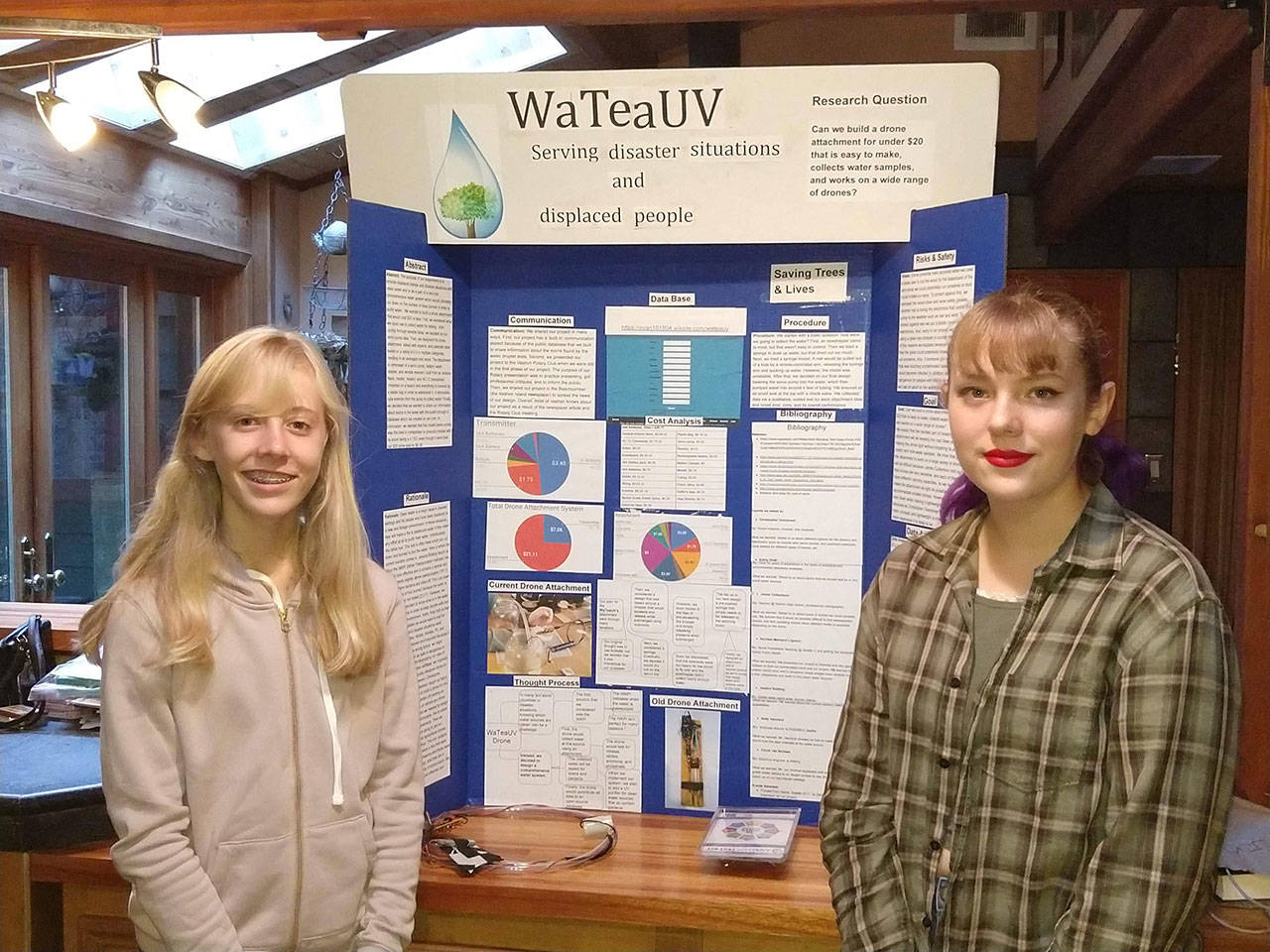Two McMurray eighth graders have earned their place in the top 1 percent of students nationwide, competing in the Broadcom MASTERS’ student science competition for middle schoolers.
Iris Bordman and Alyssa Hawkins placed in the top 300 of the 2,537 students across the country who entered the competition with their safe water sampling project — a drone attachment for testing water during disasters or for displaced populations; it collects water for safety testing and aids in the location of clean water sources.
The two (with another McMurray student, Evan Hancock) also won first place in the Environmental Engineering category for their efforts at the Washington State Science & Engineering Fair (WSSEF) last spring.
The idea for the project originated during Bordman and Hawkins’ involvement with the McMurray robotics team, Sneaky Whales, last winter.
In a story reported by The Beachcomber last January, the Sneaky Whales team created a water sampling “arm” for drones as part of its FIRST LEGO League competition entry — a humanitarian project was required along with the team’s robot work. It was that project that Bordman, Hawkins and Hancock decided to keep working on and took to the WSSEF in March.
“Our idea was inspired in part by a visit to a Doctors Without Borders presentation,” Hawkins said in an email to The Beachcomber. “We wanted to find a way to help people in refugee situations who cannot easily find clean water. Since then, our idea has morphed into a design that could help biologists and natural disaster victims alike.”
After the win at WSSEF, the three received an invitation to participate in the Broadcom MASTERS competition, which is primarily an online platform involving essays and STEM-related questions. Bordman and Hawkins chose to participate and were selected as part of the top 300.
“They really latched on to this project, and were determined to continue improving it and refining it,” Jessica Bolding, Bordman’s mother and Sneaky Whales project coach, said. “Their goal was to be able to build it for under $20, and they got it to $24. Now they’re researching global water health agencies and specialists to get it out there.”
Bordman, for her part, added that the project still needs some work.
“In the future, we hope to continue to develop our project,” she said in an email to The Beachcomber. “Our current goal is to refine and edit our model before sending it out to various locations for field testing.”
Hawkins agreed.
“I think that the reason we’ve stuck with it so long is that we both believe that our design has the power to help people,” she said, “and we want to make sure that we give it our all.”



